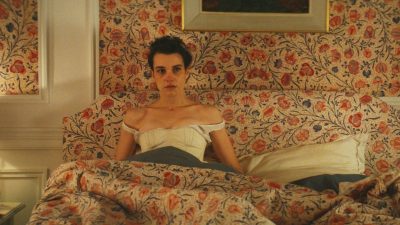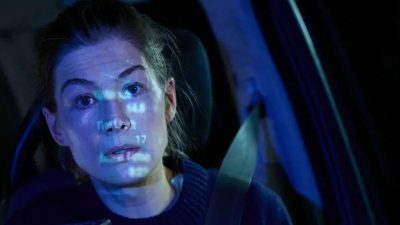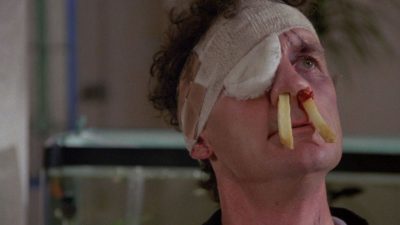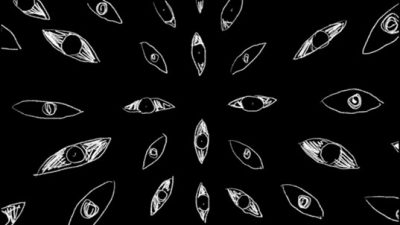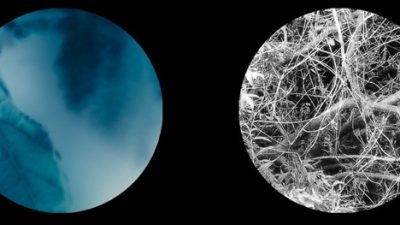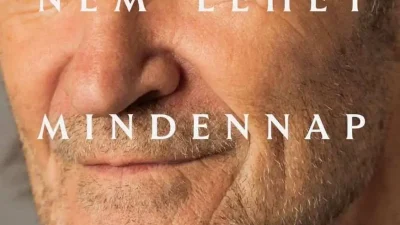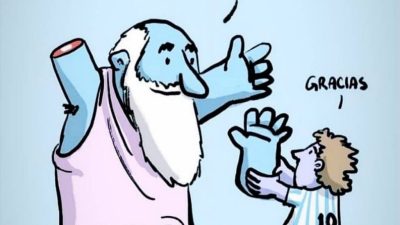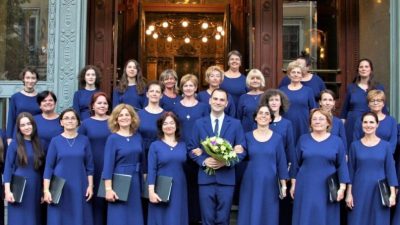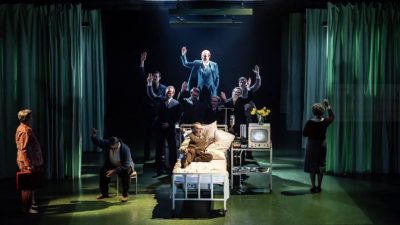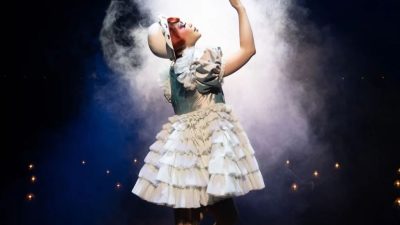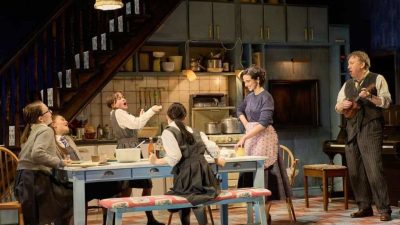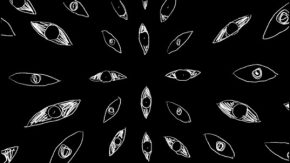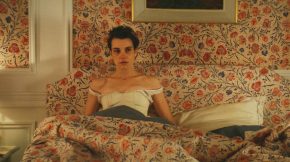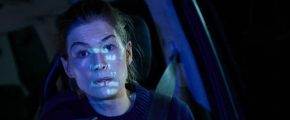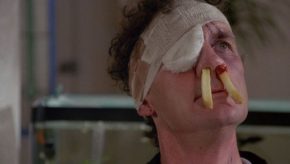If ever there was a film to make you clutch your pearls—or your popcorn—it’s The Night of the Hunter. Directed by Charles Laughton in 1955, this was his one and only foray into feature filmmaking. Imagine creating a masterpiece so bold, so unique, that it would go on to influence directors like Martin Scorsese, Spike Lee, and Guillermo del Toro, only to have it bomb so hard that you never direct again. Such was Laughton’s fate, and what a loss for cinema.
Today, however, The Night of the Hunter is considered one of the greatest films ever made, with the French magazine Cahiers du Cinéma ranking it second only to Citizen Kane. But how did a movie that blends Mother Goose fairy tales with a psychological thriller end up becoming an American classic? Let’s see.
A Serial Killer with Knuckle Tattoos
At the heart of the film is Harry Powell, a self-proclaimed preacher played by Robert Mitchum in what might be the performance of his career. Powell is a Bible-thumping con artist with the words “LOVE” and “HATE” tattooed on his knuckles, and he delivers one of the most chilling monologues about their battle that you’ll ever hear (Ah, little lad, you’re starin’ at my fingers. Would you like me to tell you the little story of Right Hand-Left Hand…) Charmingly manipulative and utterly psychotic, Powell is based on a real-life serial killer, Harry Powers, who was hanged in 1932 for murdering two widows and three children in West Virginia.

Source: Museum of Fine Arts, Boston
Powell’s “mission” in the film? To find $10,000 hidden by Ben Harper (Peter Graves), a man who stole the money to provide for his children during the Great Depression. Harper is caught and executed, but not before making his children, John and Pearl, swear to hide the cash and never reveal its location. Enter Powell, who marries their widowed mother, Willa (Shelley Winters), and begins a psychological and physical campaign to extract the money’s whereabouts from the kids. What follows is a harrowing tale of survival as the children flee Powell’s clutches upriver in a boat, embarking on a journey that feels equal parts fairy tale and nightmare.
A Symphony of Shadows
Visually, The Night of the Hunter is a feast for the eyes, thanks to cinematographer Stanley Cortez. Known for his work on The Magnificent Ambersons, Cortez employs deep shadows, stark lighting, and uses every inch of the expressionistic set design to experiment and to eventually craft a world that’s as haunting as it is beautiful. One scene shows Powell’s shadow towering over the children’s bedroom wall like a specter of doom; another frames him on horseback in the distance, singing a hymn, as he stalks the fleeing kids. The use of black-and-white cinematography here is not just aesthetic; it is psychological, enhancing the film’s tension and fairy-tale quality.
The sheer thought of Willa’s bedroom, which looks like a crossover between a church’s apse and a crypt, already gives me the shivers. Laughton’s expressionistic approach to set design and camerawork feels like something out of a 1930s German movie or a Grimm Brothers tale—except instead of witches, vampires and wolves, we have a smooth-talking psychopath.
While the film is often terrifying, it also has a lyrical, almost spiritual quality. As John and Pearl navigate the river, they are surrounded by nature that seems to shield them: birds, foxes, and rabbits scurry protectively in the underbrush. It is a sequence that feels like an ode to resilience and innocence in the face of evil.
Their journey eventually brings them to Rachel Cooper, played by silent film legend Lillian Gish. Rachel is the ultimate Mother Goose figure: stern yet kind, with a shotgun in her lap and a fierce determination to protect the children from Powell. Gish’s performance is a marvel, and her final confrontation with Powell is as nerve-wracking as it is poetic. Laughton’s direction here shines, capturing Gish in soft, angelic lighting that contrasts with Powell’s shadowy menace.

Source: Minden Napra 1 Film
Part of what makes The Night of the Hunter so enduring is its refusal to fit neatly into any one genre. It is a horror-thriller, yes, but it is also a Depression-era parable, a spiritual meditation, and a dark fairy tale. Laughton takes risks at every turn, blending these elements with experimental techniques that were far ahead of their time. From the chilling sing-song of Mitchum’s and Gish’s duet of “Leaning on the Everlasting Arms” to the dreamlike journey on the river, every frame feels deliberate, every choice bold.
Behind the Scenes: Drama On and Off Set
While the final product is a masterpiece, the production was not without its hiccups. Laughton reportedly struggled with directing the child actors, particularly Billy Chapin (John), who allegedly declared, “I just won a New York critics prize; nobody tells me what to do.” Laughton’s response? “Get that kid away from me.” Much of the children’s direction fell to Mitchum, whose reputation for hard living added another layer of drama. Legend has it that when a producer questioned Mitchum’s ability to play Powell due to his personal demons, Mitchum retaliated by urinating on the producer’s car seats. Whether true or not, it is a fitting anecdote for a film as wild as this one.
Shelley Winters, meanwhile, described her performance as “the most thoughtful and reserved” of her career. She is unforgettable as Willa, whose vulnerability and tragic naïveté make her a stark contrast to Powell’s predatory charm.
The Legacy
The Night of the Hunter may have flopped in its time, but its influence is undeniable. Its daring cinematography, genre-bending narrative, and exploration of good versus evil continue to resonate, making it as relevant today as it was unsettling in 1955.
At its core, the film is about resilience—about how innocence and goodness can prevail even in the face of unimaginable darkness. In a world that often feels as chaotic as the Great Depression, that message feels more vital than ever. As Ms. Cooper says in the movie “It’s a hard world for little things”, and raising attention to the well-being of children is not a shabby mission for storytelling. And while Laughton never directed another film, The Night of the Hunter ensures that his legacy endures, casting its long, haunting shadow across the history of cinema.
So, next time you are in the mood for something both terrifying and transcendent, cue up The Night of the Hunter. Just don’t watch it alone.
The Night of the Hunter is now streaming on Apple TV.
~ by Dora Endre ~

